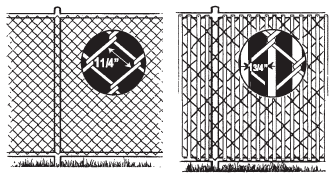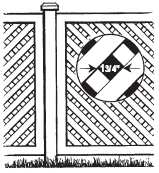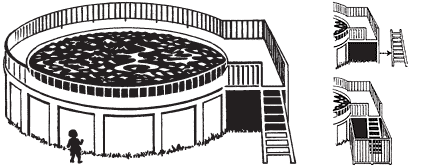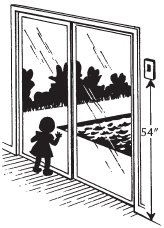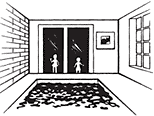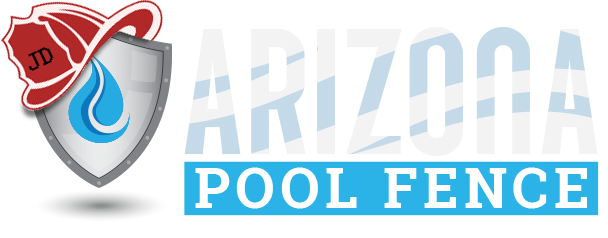
We install the highest quality pool fences, pool covers, and safety gates.
Arizona Pool Fence
1513 W Hatcher Rd, Phoenix, AZ 85021
-
MY CART
No products in cart.
Swimming Pool Barrier Guidelines
This section explains the CPSC swimming pool barrier guidelines with illustrated descriptions of pool barriers. Definitions of terms used in the guidelines are provided on page 6. The definition of pool includes spas and hot tubs; the swimming pool barrier guidelines therefore apply to these structures as well as to conventional swimming pools. A successful pool barrier prevents a child from getting OVER, UNDER, or THROUGH and keeps the child from gaining access to the pool except when supervising adults are present.
How to Prevent a Child from Getting OVER a Pool Barrier
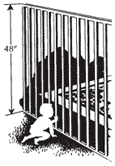 A young child can get over a pool barrier if the barrier is too low or if the barrier has handholds or footholds for a child to use when climbing. The guidelines recommend that the top of a pool barrier be at least 48 inches above grade, measured on the side of the barrier which faces away from the swimming pool. Guidelines recommend eliminating handholds and footholds and minimizing the size of openings in a barrier’s construction.
A young child can get over a pool barrier if the barrier is too low or if the barrier has handholds or footholds for a child to use when climbing. The guidelines recommend that the top of a pool barrier be at least 48 inches above grade, measured on the side of the barrier which faces away from the swimming pool. Guidelines recommend eliminating handholds and footholds and minimizing the size of openings in a barrier’s construction.
For a Solid Barrier: No indentations or protrusions should be present, other than normal construction tolerances and masonry joints.
For a Barrier (Fence) Made Up of Horizontal and Vertical Members: If the distance between the tops of the horizontal members is less than 45 inches, the horizontal members should be on the swimming pool side of the fence. The spacing of the vertical members should not exceed 1-3/4 inches. This size is based on the foot width of a young child and is intended to reduce the potential for a child to gain a foothold. If there are any decorative cutouts in the fence, the space within the cutouts should not exceed 1-3/4 inches.
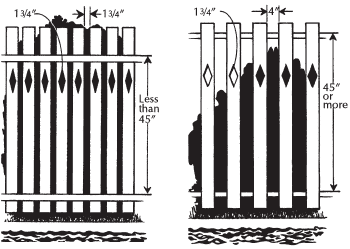
If the distance between the tops of the horizontal members is more than 45 inches, the horizontal members can be on the side of the fence facing away from the pool. The spacing between vertical members should not exceed 4 inches. This size is based on the head breadth and chest depth of a young child and is intended to prevent a child from passing through an opening. Again, if there are any decorative cutouts in the fence, the space within the cutouts should not exceed 1-3/4 inches.
For a Chain Link Fence: The mesh size should not exceed 1-1/4 inches square unless slats, fastened at the top or bottom of the fence, are used to reduce mesh openings to no more than 1-3/4 inches.
For a Fence Made Up of Diagonal Members (Latticework): The maximum opening in the lattice should not exceed 1-3/4 inches.
For Above Ground Pools: Above Ground pools should have barriers. The pool structure itself serves as a barrier or a barrier is mounted on top of the pool structure. Then, there are two possible ways to prevent young children from climbing up into an above ground pool. The steps or ladder can be designed to be secured, locked or removed to prevent access, or the steps or ladder can be surrounded by a barrier such as those described above.
How to Prevent a Child from Getting UNDER a Pool Barrier
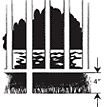
Above Ground Pool with Barrier on Top of Pool: If an above ground pool has a barrier on the top of the pool, the maximum vertical clearance between the top of the pool and the bottom of the barrier should not exceed 4 inches.
How to Prevent a Child from Getting THROUGH a Pool Barrier

Gates: There are two kinds of gates which might be found on a residential property. Both can play a part in the design of a swimming pool barrier.
Pedestrian Gates: These are the gates people walk through. Swimming pool barriers should be equipped with a gate or gates which restrict access to the pool. A locking device should be included in the gate design. Gates should open out from the pool and should be self closing and self-latching. If a gate is properly designed, even if the gate is not completely latched, a young child pushing on the gate in order to enter the pool area will at least close the gate and may actually engage the latch. 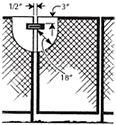
All Other Gates (Vehicle Entrances, Etc.): Other gates should be equipped with self-latching devices. The self-latching devices should be installed as described for pedestrian gates.
When the House Wall Forms Part of the Pool Barrier: In many homes, doors open directly onto the pool area or onto a patio which leads to the pool. In such cases, the wall of the house is an important part of the pool barrier, and passage through any doors in the house wall should be controlled by security measures. The importance of controlling a young child’s movement from house to pool is demonstrated by the statistics obtained during CPSC’s study of pool incidents in California, Arizona and Florida: almost half (46 percent) of the children who became victims of pool accidents were last seen in the house just before they were found in the pool. All doors which give access to a swimming pool should be equipped with an audible alarm which sounds when the door and/or screen are opened. The alarm should sound for 30 seconds or more within 7 seconds after the door is opened. Alarms should meet the requirements of UL 2017 General-Purpose Signaling Devices and Systems, Section 77. The alarm should be loud: at least 85 dBA (decibels) when measured 10 feet away from the alarm mechanism. The alarm sound should be distinct from other sounds in the house, such as the telephone, doorbell and smoke alarm. The alarm should have an automatic reset feature. Because adults will want to pass through house doors in the pool barrier without setting off the alarm, the alarm should have a switch that allows adults to temporarily deactivate the alarm for up to 15 seconds. The deactivation switch could be a touchpad (keypad) or a manual switch, and should be located at least 54 inches above the threshold of the door covered by the alarm. This height was selected based on the reaching ability of young children. Power safety covers can be installed on pools to serve as security barriers. Power safety covers should conform to the specifications in ASTM F 1346-91. This standard specifies safety performance requirements for pool covers to protect young children from drowning. If you wish further information on this standard, contact ASTM, Inc., Philadelphia, Pa. (formerly the American Society for Testing & Materials), directly. Self-closing doors with self-latching devices could also be used to safeguard doors which give ready access to a swimming pool.
Indoor Pools: When a pool is located completely within a house, the walls that surround the pool should be equipped to serve as pool safety barriers. Measures recommended above where a house wall serves as part of a safety barrier also apply for all the walls surrounding an indoor pool.
Still have questions?

Maloney’s Pool Care and Child Barrier Fencing- DBA Arizona Pool Fence - ROC 203777
Website by: SP Marketing Experts
